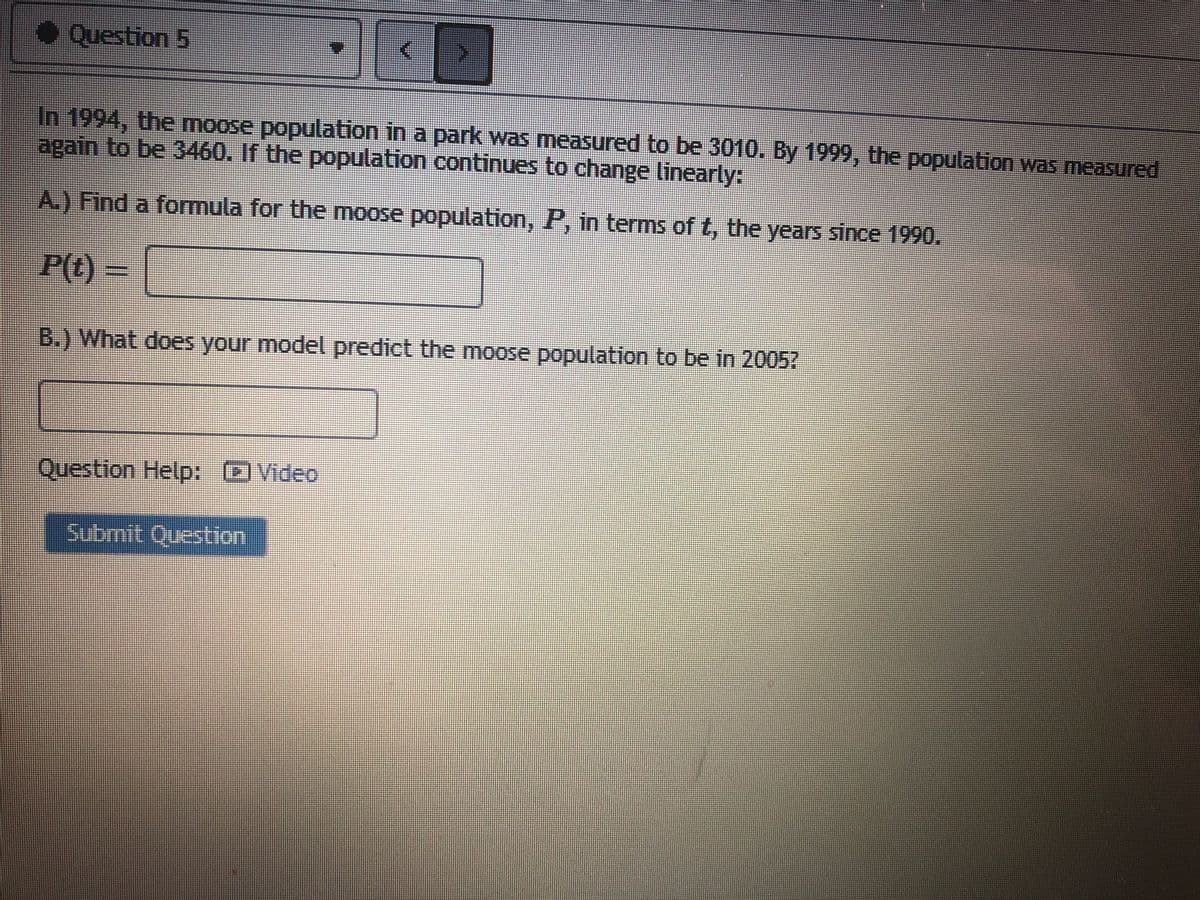In 1994, the moose population in a park was measured to be 3010. By 1999, the population was measured again to be 3460. If the population continues to change linearly: A.) Find a formula for the moose population, P, in terms of t, the years since 1990. P(t) = B.) What does your model predict the moose population to be in 2005? Question Help: Video Submit Question
In 1994, the moose population in a park was measured to be 3010. By 1999, the population was measured again to be 3460. If the population continues to change linearly: A.) Find a formula for the moose population, P, in terms of t, the years since 1990. P(t) = B.) What does your model predict the moose population to be in 2005? Question Help: Video Submit Question
Algebra & Trigonometry with Analytic Geometry
13th Edition
ISBN:9781133382119
Author:Swokowski
Publisher:Swokowski
Chapter3: Functions And Graphs
Section3.3: Lines
Problem 60E
Related questions
Question

Transcribed Image Text:O Question 5
In 1994, the moose population in a park was measured to be 3010. By 1999, the population was measured
again to be 3460. If the population continues to change linearly:
A.) Find a formula for the moose population, P, in terms of t, the years since 1990.
P(t) –
B.) What does your model predict the moose population to be in 2005?
Question Help: OVideo
Submit Question
Expert Solution
This question has been solved!
Explore an expertly crafted, step-by-step solution for a thorough understanding of key concepts.
This is a popular solution!
Trending now
This is a popular solution!
Step by step
Solved in 2 steps with 2 images

Knowledge Booster
Learn more about
Need a deep-dive on the concept behind this application? Look no further. Learn more about this topic, algebra and related others by exploring similar questions and additional content below.Recommended textbooks for you

Algebra & Trigonometry with Analytic Geometry
Algebra
ISBN:
9781133382119
Author:
Swokowski
Publisher:
Cengage

Algebra & Trigonometry with Analytic Geometry
Algebra
ISBN:
9781133382119
Author:
Swokowski
Publisher:
Cengage